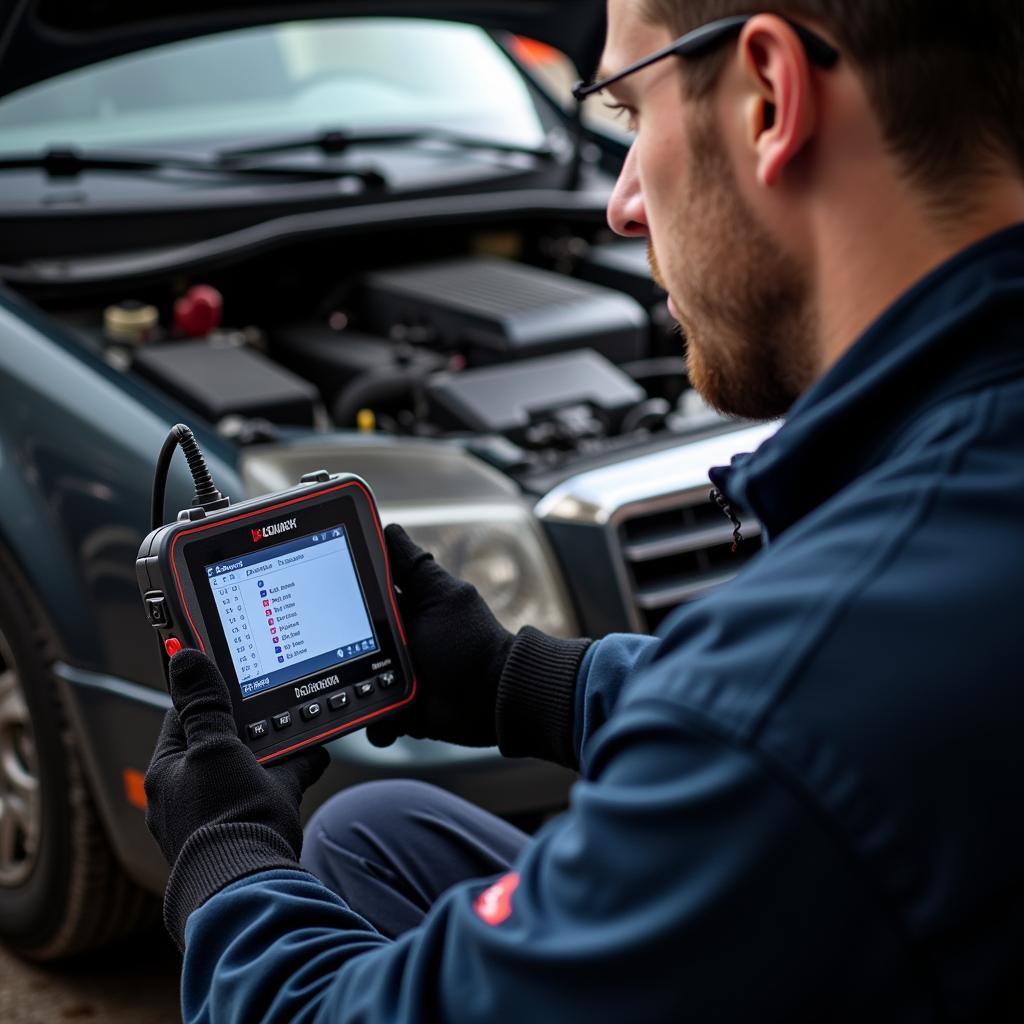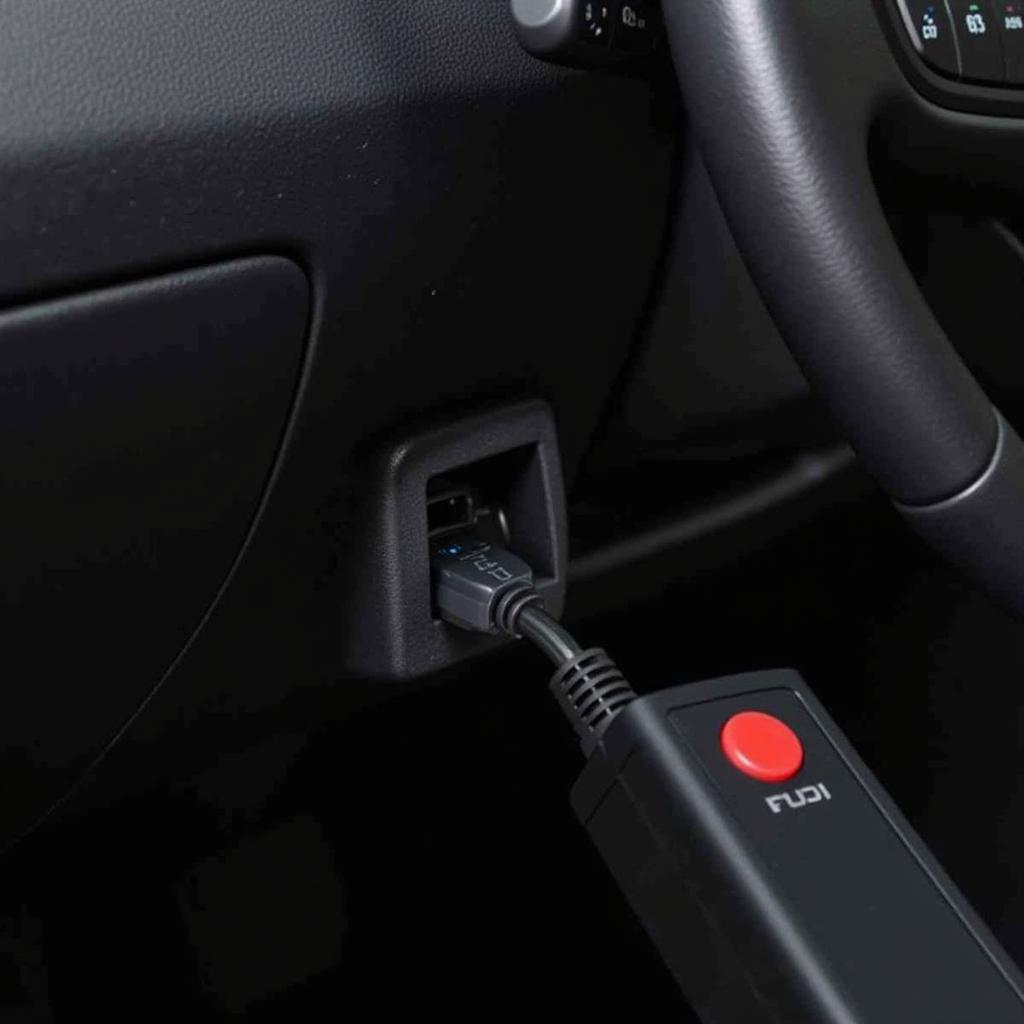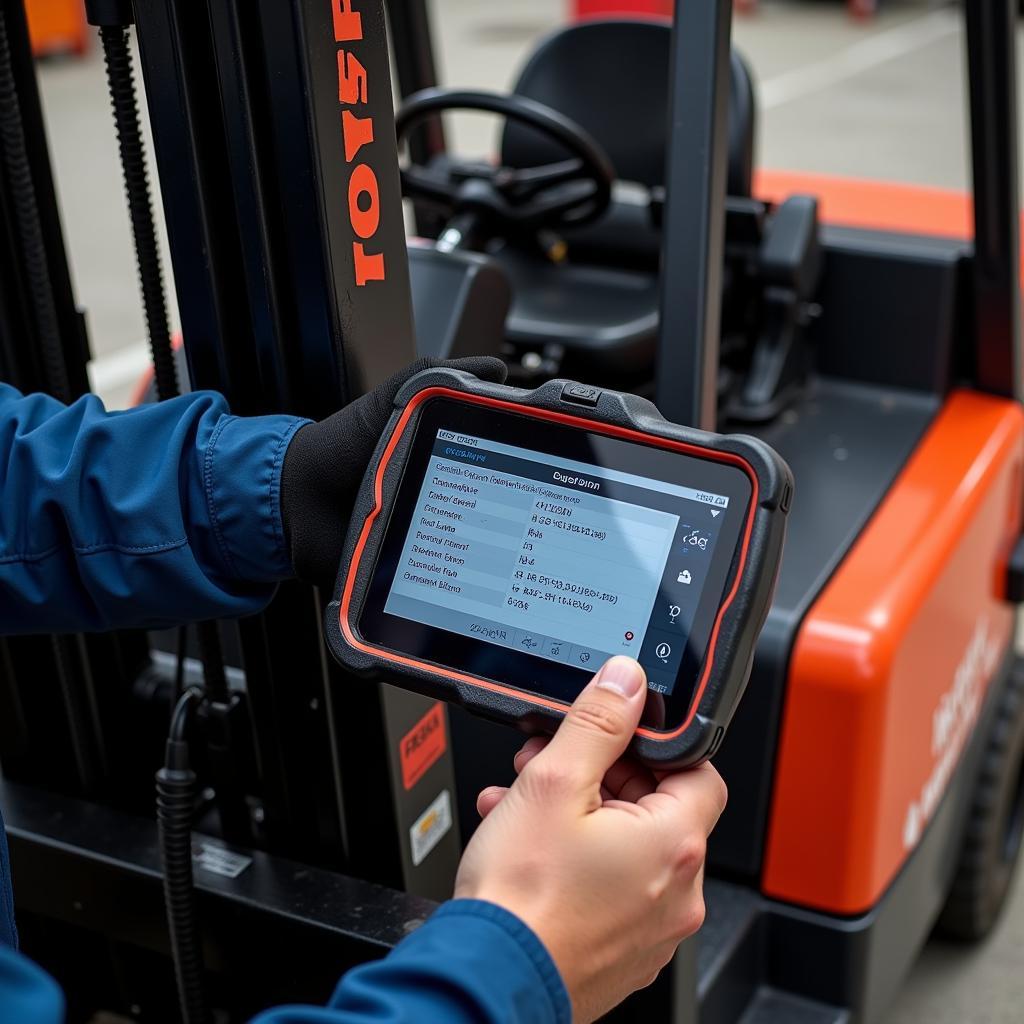Finding the right launch diagnostic tool in the UK can feel like searching for a needle in a haystack. With countless options available, it’s easy to get lost in a sea of technical jargon and confusing specifications. This guide is here to cut through the noise and provide you with all the information you need to make an informed decision, whether you’re a seasoned mechanic or a car enthusiast looking to delve into DIY diagnostics.
Why You Need a Launch Diagnostic Tool
Modern vehicles are complex machines controlled by intricate electronic systems. When something goes wrong, a launch diagnostic tool acts as your window into these systems, revealing the source of the problem. Here’s why having one is essential:
- Accurate Diagnosis: Forget about time-consuming and often inaccurate guesswork. A launch diagnostic tool pinpoints the exact issue, saving you time and money on unnecessary repairs.
- DIY Repairs: For the mechanically inclined, a launch diagnostic tool empowers you to tackle repairs yourself, avoiding costly garage visits.
- Enhanced Understanding: Gain a deeper understanding of your vehicle’s health, performance, and potential issues.
- Preventative Maintenance: Regularly scanning your car helps identify minor problems before they escalate into major headaches.
Types of Launch Diagnostic Tools
Choosing the right launch diagnostic tool depends on your specific needs and budget. Here are the most common types:
1. Code Readers:
- Ideal for: Basic diagnostics, reading and clearing error codes.
- Features: Display fault codes and their definitions. Some models may offer basic live data.
- Price: Most affordable option.
2. OBD Scanners:
- Ideal for: Home mechanics and DIY enthusiasts who want more than basic code reading.
- Features: Read and clear codes, display live data, perform some bi-directional controls (e.g., actuate components).
- Price: Mid-range option offering excellent value for money.
3. Professional Diagnostic Scanners:
- Ideal for: Professional mechanics and workshops dealing with a wide range of vehicle makes and models.
- Features: Comprehensive diagnostic capabilities, including advanced coding, programming, and ECU flashing.
- Price: The most expensive option but offers unmatched functionality.
 Professional Launch Diagnostic Scanner
Professional Launch Diagnostic Scanner
Key Features to Consider
Navigating the world of launch diagnostic tools involves understanding key features that differentiate one from another:
- Vehicle Coverage: Ensure the tool supports your vehicle’s make, model, and year. Look for tools with wide vehicle coverage, especially if you work with multiple car brands.
- Software Updates: Regular software updates are crucial for compatibility with the latest vehicle models and technologies. Check for free or reasonably priced updates.
- User Interface: An intuitive and user-friendly interface makes navigating menus and interpreting data easy. Look for tools with clear displays and logically organized functions.
- Data Logging: The ability to log data allows you to track parameters over time, which is helpful for intermittent problems or monitoring specific systems.
- Additional Features: Some tools offer extras like printing capabilities, wireless connectivity, and technical support.
“When choosing a launch diagnostic tool, don’t just focus on the price tag,” advises James Wilson, Senior Automotive Technician at [Insert Reputable Garage Name]. “Investing in a tool with the right features and capabilities for your needs will save you time, money, and frustration in the long run.”
How to Use a Launch Diagnostic Tool
Using a launch diagnostic tool is generally straightforward:
- Locate your vehicle’s OBD-II port. It’s usually located under the dashboard on the driver’s side.
- Connect the diagnostic tool to the OBD-II port.
- Turn on the ignition but don’t start the engine.
- Follow the on-screen prompts to access the desired functions. This may involve selecting your vehicle’s make, model, and year.
- Read and interpret the displayed information. Most tools will show fault codes, their definitions, and live data from various sensors.
 Connecting OBD Scanner
Connecting OBD Scanner
Common Uses for a Launch Diagnostic Tool
The applications of a launch diagnostic tool extend beyond simply reading error codes. Here are some common uses:
- Reading and Clearing Fault Codes: Identify and clear engine, transmission, ABS, airbag, and other system codes.
- Viewing Live Data: Monitor real-time sensor readings like engine RPM, coolant temperature, oxygen sensor voltage, and more.
- Performing Actuator Tests: Activate components like fuel injectors, solenoids, and relays to test their functionality.
- Resetting Service Lights: Reset oil change, service engine soon, and other maintenance reminders.
- ECU Programming: Advanced tools allow for ECU reprogramming and software updates.
Choosing the Right Launch Diagnostic Tool in the UK
With a plethora of options available, selecting the right launch diagnostic tool in the UK can seem daunting. However, by considering these factors, you can simplify the process:
- Your Skill Level: Beginners may find basic code readers sufficient, while professional mechanics require the comprehensive capabilities of high-end scanners.
- Your Budget: Set a realistic budget and explore tools that offer the best value within your price range. Remember, investing in quality often pays off in the long run.
- Your Vehicle: Ensure the tool supports your car’s make, model, and year. If you work with various vehicles, prioritize tools with broad coverage.
- Reviews and Recommendations: Research online reviews and seek recommendations from fellow mechanics or car enthusiasts.
Conclusion
A launch diagnostic tool is an indispensable asset for anyone who owns, maintains, or repairs vehicles. By understanding the different types, key features, and common uses, you can confidently choose the right tool to meet your specific needs. Don’t let the complexities of modern vehicles leave you stranded. Equip yourself with the power of knowledge and the right diagnostic tool to keep your car running smoothly for years to come.
For expert advice on choosing the perfect launch diagnostic tool, contact ScanToolUS at +1 (641) 206-8880 or visit our office at 1615 S Laramie Ave, Cicero, IL 60804, USA. Our team of specialists is dedicated to providing you with the best solutions for all your automotive diagnostic needs.

